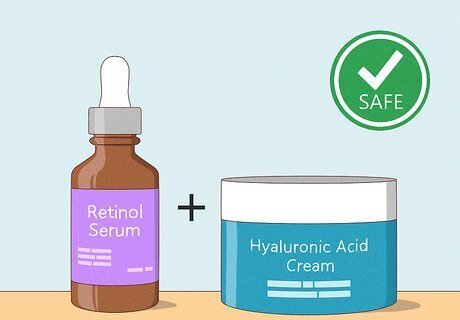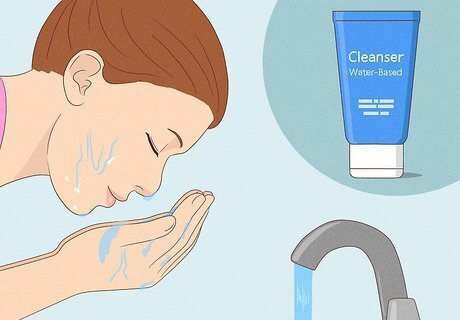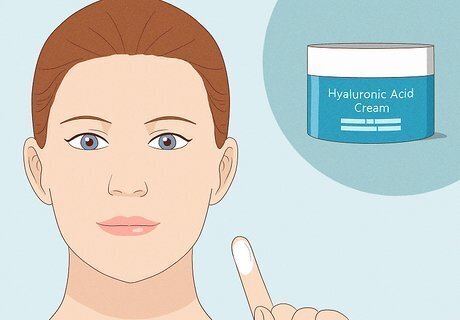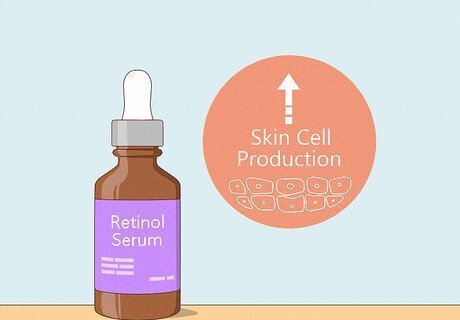
views
- Use hyaluronic acid and retinol together to improve the overall texture of your skin. Retinol increases cell turnover but can be irritating, and hyaluronic acid soothes and hydrates.
- To incorporate both ingredients into your skincare routine, cleanse your face, apply a thin layer of retinol, and then finish off with a hyaluronic acid cream or moisturizer.
- Retinol can increase your risk for sunburn, so only apply it at night, and be sure to wear sunscreen during the day.
Can you use hyaluronic acid and retinol together?

Yes, it’s safe to use hyaluronic acid and retinol in the same routine. Retinol increases cell turnover, which can cause dry or flaky skin. Since hyaluronic acid is extremely hydrating, it counteracts the irritating effects of retinol, improving the overall tone and texture of your skin. When you combine both ingredients, they better address fine lines and wrinkles to give your skin a fresher appearance. There are potential side effects of using both ingredients, but your chance of irritation is likely to come from the retinol itself—not through the combination of retinol and hyaluronic acid. Side effects of retinol include: dryness, redness, irritation, itching, burning, or peeling or flaking of the skin
How to Use Hyaluronic Acid & Retinol Together

Cleanse your face. To remove any impurities and oils from your face, wet your face with lukewarm water and apply a water-based cleanser over your face and neck. Gently massage the cleanser into your skin using circular motions, and then rinse and pat dry. Look for cleansers that say “gentle” or “moisturizing” on the label—harsh products can increase retinol irritation. If you’re wearing heavy makeup or sunscreen, double cleanse with a cleansing balm before applying your water-based cleanser. This removes any traces of grime to help your retinol and hyaluronic acid penetrate your skin better. To avoid pulling or dragging your skin, remember to pat your face dry (instead of rubbing).

Apply a thin layer of retinol. After your skin is completely dry, use a pea-sized amount of retinol serum, gel, or cream over your entire face, avoiding your eyes, lips, and mouth. If you have sensitive skin, apply your retinol 30 minutes after washing your face to help reduce redness and irritation. Since retinol increases your skin’s sensitivity to the sun, only apply it at night, and be sure to wear sunscreen and sun protective clothing during the day.

Finish off with your hyaluronic acid. Once your retinol is dry to the touch, apply a nickel-sized amount of hyaluronic acid cream or moisturizer over your face and neck. Choose a moisturizer that says “non-comedogenic” so it doesn’t clog your pores.Layer your skincare products from thinnest to thickest. For example, if you’re using a hyaluronic acid serum, which is thin, apply it before a thicker retinol cream so it can absorb properly.
What is hyaluronic acid?

Hyaluronic acid is a substance that retains moisture (i.e. a humectant). It’s capable of holding over 1000 times its weight in water, keeping your skin smooth, plump, and hydrated. When you apply it topically, it helps reduce fine lines and wrinkles, improve skin elasticity, and heal wounds quickly. Since hyaluronic acid is a humectant, it draws moisture in but doesn’t lock it in. If you apply it on dry skin, it can pull water from your skin, so be sure to apply it on damp skin and top it off with a hydrating moisturizer.
What is retinol?

Retinol is a form of vitamin A that increases skin cell production. Because retinol peels the top layers of your skin away, it increases collagen production and helps unclog pores. It also reduces the appearance of wrinkles, sun-spots, dark spots, and acne scars—making your skin appear more full and youthful. If you’re using retinol for the first time, it may take several weeks to see an improvement in your skin. Even though retinol takes longer than other products, be patient and use it consistently for 2 months—retinol is one of the best skincare ingredients to fight aging and acne, and your skin transformation is totally worth the wait!


















Comments
0 comment